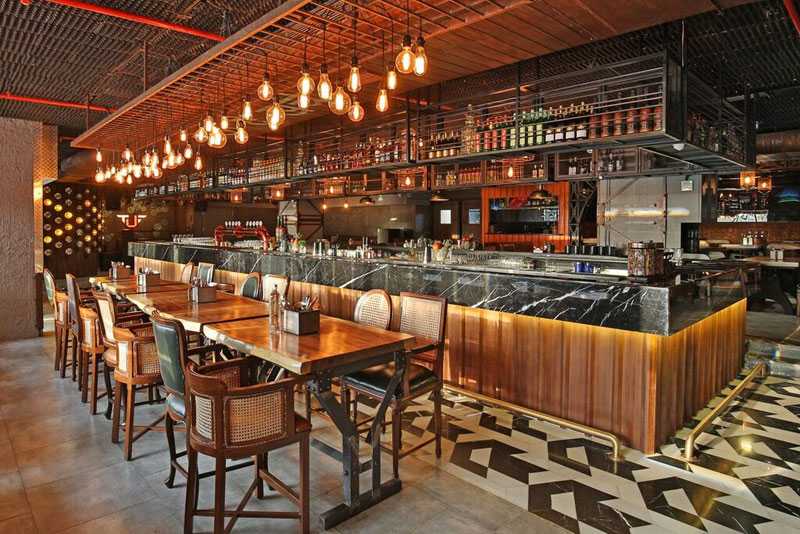Munro outfits India’s Urban Foundry Eatery
- Details

With several locations in Mumbai and Pune in India’s Maharashtra state, The Urban Foundry is a bar and eatery with an industrial aesthetic that incorporates brick, metal and glass materials. The Foundry’s new location features a performance area for live music, but the highly reflective surfaces in the restaurant made it difficult to control the sound. In order to solve this challenge, management hired acoustic consultancy firm Munro Acoustics to design and install an end-to-end Harman Professional audio system comprised of JBL loudspeakers, Crown amplifiers and a Soundcraft mixer.
“We wanted our new location in Pune to be different from the others, so we added a performance space for live music,” said Kishore Shetty, general manager of operations for The Urban Foundry. “This presented a challenge, as we had to ensure quality sound for performances while retaining our signature industrial design. We chose to work with Harman Professional Solutions and Munro Acoustics because they understood our situation better than anyone else. The service was great, the process quick and it was our easiest installation yet. The sound quality here has exceeded my expectations.”
The Munro Acoustics team selected two full-range JBL AM7215 15” 2-way loudspeakers for the main array, supplemented by six JBL AC16 ultra-compact 6” speakers as side-fills. JBL ASB6118 subwoofers with 18” Super Vented Gap (SVG) drivers provide high output and extended bandwidth for a full low-end response. To power the system, Munro deployed Crown CDi DriveCore 4|300 power amplifiers. For a streamlined mixing and monitoring solution, Munroe paired the compact Soundcraft EPM 6 mixer with JBL EON610 monitors.
“The floor-to-ceiling metal posed a major challenge to the acoustics of the space,” says Kapil Thirwani, Partner at Munro Acoustics. “Our client emphasized the importance of live music at The Foundry, requesting that we make the space as performance-friendly as possible. The hard surfaces throughout the space produced ringing reflections, so we had to position the speakers precisely to cover the audience with minimum interference from the room.”
(Jim Evans)














